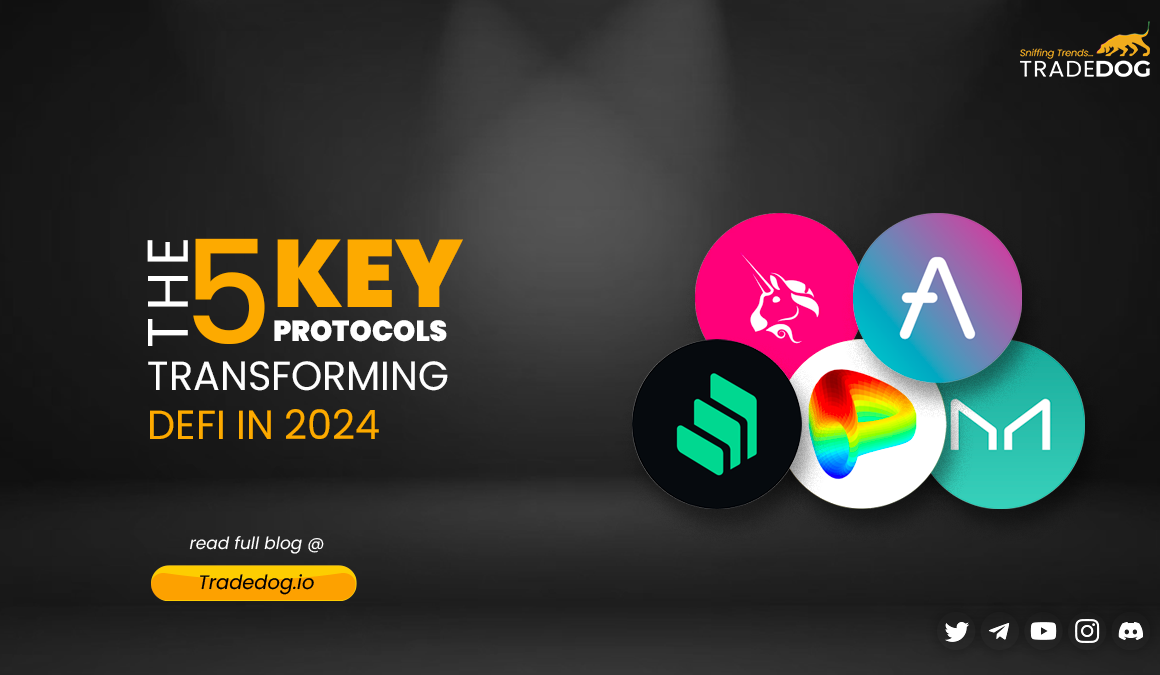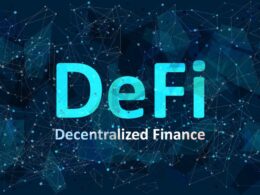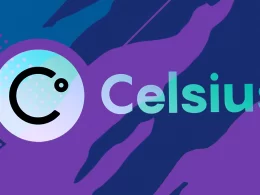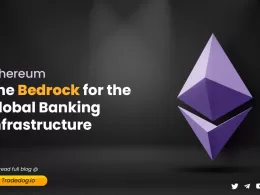Quick Links
As we venture into 2024, the landscape of decentralized finance (DeFi) has evolved remarkably, presenting a plethora of protocols that are not just innovative but crucial in reshaping the financial sector. These DeFi protocols, underpinned by blockchain technology, have democratized financial services, offering a level of accessibility, transparency, and efficiency previously unattainable through traditional economic systems. In this exploration, we delve into the top five DeFi protocols of 2024, each distinguished by its unique contributions and advancements. These protocols exemplify the pinnacle of DeFi’s potential, offering solutions ranging from lending and borrowing platforms to complex decentralized exchanges and liquidity pools. In this blog, we are going to shed light on the top 5 Defi protocols according to their key features and impact in the Defi space.
Let’s delve into the top 5 DeFi protocols that are reshaping the landscape of finance:
Uniswap (UNI): Redefining Token Exchange
Uniswap is a prominent decentralized exchange (DEX) and automated liquidity protocol built on the Ethereum blockchain. Launched in 2018, it has become a key player in the decentralized finance (DeFi) landscape. Uniswap is unique in that it utilizes an automated market maker (AMM) model, which allows users to trade digital assets without the need for traditional market makers or order books. Instead, trades are executed directly against liquidity pools that users fund. Those who contribute their assets to these pools earn trading fees based on their share of the pool’s total liquidity.
This approach democratizes the liquidity provision and ensures constant market liquidity. Uniswap’s design promotes decentralization and censorship resistance, allowing anyone with an Ethereum wallet to participate in the DeFi ecosystem. It has significantly influenced the growth of DeFi by providing an accessible, secure, and efficient platform for exchanging cryptocurrencies.
Key Features
- Decentralization and Automation: Uniswap operates on a decentralized model, removing the need for intermediaries typically found in traditional exchanges. It utilizes an automated market maker (AMM) protocol. Instead of using an order book like conventional exchanges, it employs an algorithm to create markets for any given pair of tokens. This automation is based on liquidity pools, where users (liquidity providers) pool their tokens, which are then available for trading.
- Cross-Chain Compatibility: Initially built on the Ethereum blockchain, Uniswap recognized the need for interoperability in the DeFi ecosystem. By extending its services to other blockchains like Polygon, Arbitrum, and Avalanche, Uniswap has significantly enhanced its accessibility and reduced the Ethereum blockchain’s congestion and high gas fees. This expansion allows a broader range of users to access DeFi services, irrespective of the blockchain they prefer.
- Community-Driven Approach: Uniswap has a strong emphasis on community governance. UNI token holders can vote on proposals that influence the direction and development of the protocol. This democratic approach ensures that the platform evolves in a way that aligns with the interests of its user base.
Impact
- Alternative to Traditional Exchanges: In recent years, there’s been a significant shift among investors from centralized exchanges (CEXs) to decentralized exchanges (DEXs), exemplified by the surge in Uniswap’s exchange volume. This transition is primarily driven by the desire to overcome the vulnerabilities of CEXs, such as susceptibility to hacks and custodial risks. Uniswap, as a leading DEX, offers a decentralized platform for token exchange, which inherently enhances user privacy and security. Unlike CEXs, Uniswap operates without the need for collecting personal user data and reduces reliance on a single point of failure. This shift not only marks a change in investor preference but also underscores the growing trust and reliance on blockchain technology for more secure and private financial transactions.
- Increased Transparency and Accessibility: The open-source nature of Uniswap fosters transparency, allowing anyone to review and audit the code. It has lowered barriers to entry in the trading domain, enabling anyone with an internet connection and a digital wallet to participate.
- Contribution to DeFi Growth: Uniswap has significantly influenced DeFi’s growth, highlighted by key metrics: it has processed over $1.237 Billion volume of transactions in 24hrs, and its Total Value Locked (TVL) stands at $4.276 Billion, demonstrating its importance in the DeFi space. These statistics not only reflect Uniswap’s success but also its role in advancing decentralized finance and inspiring other DeFi projects.
Aave (AAVE): Pioneering DeFi Lending
Aave is a decentralized finance protocol that enables users to lend and borrow cryptocurrencies. Launched in 2017 originally under the name ETHLend, it was rebranded to Aave in 2018. The platform operates on the Ethereum blockchain and is distinguished by its innovative approach to DeFi lending. Aave allows users to deposit digital assets into liquidity pools from which others can borrow. In return, lenders earn interest, while borrowers pay interest on the assets they take out.
What sets Aave apart is its introduction of unique features like flash loans – uncollateralized loans that are issued and repaid in the same transaction – and a variety of interest rate models to cater to different user needs. Aave also introduced the concept of “aTokens,” which are interest-bearing tokens given to lenders that represent their share of the pool and accrue interest in real-time. This platform exemplifies the flexibility and potential of DeFi by providing a secure, transparent, and efficient framework for digital asset lending and borrowing.
Key Features
- Lending and Borrowing: At the heart of Aave’s functionality is the ability for users to lend their digital assets to earn interest or borrow against their holdings. This system is based on liquidity pools, where lenders deposit their funds to create a pool from which borrowers can take loans. The interest rates are algorithmically adjusted based on the supply and demand dynamics of each asset, offering competitive rates to lenders and borrowers.
- Governance Token (AAVE): AAVE, the platform’s native token, plays a crucial role in its governance model. Token holders have the right to vote on critical decisions and proposals that affect the platform’s development and operational parameters. This decentralized governance structure ensures that the platform evolves in alignment with the collective interest of its user base, fostering a sense of community ownership.
- Safety Module: Aave introduces a unique Safety Module where users can stake their AAVE tokens. In exchange for staking their tokens, participants receive additional rewards, incentivizing users to contribute to the protocol’s security. This module acts as a form of decentralized insurance, helping to protect the protocol and its users against potential deficits or other financial risks.
Impact
- Commitment to Security: Aave’s innovative features, like the Safety Module, underscore its commitment to maintaining a secure and reliable platform. By prioritizing security, Aave has earned the trust of its users and solidified its position as a safe platform for DeFi activities.
- User Empowerment and Inclusivity: By enabling governance through the AAVE token, the platform empowers its users to participate actively in its development. This approach promotes inclusivity and ensures that the platform serves the community’s best interests. Aave’s model has encouraged more users to engage with DeFi, promoting financial inclusion by making lending and borrowing more accessible.
- Setting Industry Standards: Aave’s innovative approach to lending and borrowing, coupled with its focus on security and governance, has set new standards in the DeFi space. Its success and reliability have inspired other platforms and developers, contributing to the overall growth and maturation of the DeFi ecosystem. Aave is the leading lending protocol with a Total Value Locked (TVL) of $7.17 Billion, a market capital of $1.426 billion, and an 18.69% market capital staked.
Curve Finance (CRV): Mastering Stablecoin Trades
Curve Finance is a decentralized finance (DeFi) protocol built on the Ethereum blockchain that specializes in providing efficient and low-slippage trading for stablecoins and other similar assets. Launched in 2020, Curve Finance is designed to optimize liquidity and minimize price volatility for stablecoin trading pairs by using an automated market maker (AMM) algorithm tailored explicitly to these assets. This makes it a popular choice among DeFi users who seek to swap, trade, or provide liquidity to stablecoin pools with minimal fees and slippage.
Curve Finance also allows users to earn rewards through yield farming by depositing their assets into liquidity pools and receiving trading fees and CRV tokens as incentives. As DeFi continues to evolve and gain popularity, Curve Finance plays a significant role in providing stable and efficient trading solutions within the ecosystem.
Key Features
- Stablecoin Specialization: Curve Finance is renowned for its specialization in stablecoin trading pairs, such as DAI, USDC, USDT, and others. Stablecoins are cryptocurrencies designed to maintain a stable value, often pegged to a fiat currency like the US Dollar. Curve’s primary focus on these assets ensures minimal price variation during trading. This stability is essential for users who want to move in and out of cryptocurrencies without being exposed to the high volatility associated with other tokens.
- Liquidity Pools: Curve operates on the concept of liquidity pools, where users can deposit their stablecoins into pools to provide liquidity for the market. In return, they receive pool tokens that represent their share of the pool. Curve uses an innovative market-making algorithm that is specifically tailored to stablecoins. This algorithm helps maintain tight spreads and minimizes slippage when users swap between stablecoins within the liquidity pools. This feature attracts both traders and liquidity providers to the platform. Convex Finance is a platform built on top of the Curve Finance ecosystem. Its primary role is to enhance yield farming and staking rewards for users who provide liquidity to Curve Finance’s pools.
- Governance and Rewards: Curve has a native governance token called CRV. CRV token holders have the power to participate in the protocol’s governance. They can vote on proposals related to upgrades, changes in fees, and other important decisions, helping to shape the direction of the platform. Additionally, users who provide liquidity to the pools can earn rewards through CRV tokens. These rewards serve as an incentive for users to lock their assets in the Curve ecosystem, thus increasing the liquidity and stability of the platform. In the Curve Finance ecosystem, veCRV tokens play a multifaceted role. Holders of veCRV are rewarded with increased yields for their liquidity provision and a share of the trading fees generated on Curve. This dual reward system boosts participation and enhances liquidity. Additionally, the requirement to lock CRV tokens to acquire veCRV reduces the available supply of CRV in the market, potentially impacting its price dynamics. Overall, veCRV is central to Curve’s governance, incentivization, and economic model, playing a key role in fostering a robust and active community.
Impact
Curve Finance has had a significant impact on the DeFi ecosystem by addressing the specific needs of stablecoin traders and liquidity providers. Its commitment to stability and low slippage has made it a preferred choice for users seeking to mitigate the risks associated with volatile cryptocurrencies. As a result, Curve has played a pivotal role in facilitating smoother and more efficient stablecoin trading within the decentralized finance space, contributing to the overall growth and adoption of DeFi protocols.
MakerDAO (MKR): The Backbone of DeFi Stability
MakerDAO is a decentralized autonomous organization and smart contract platform built on the Ethereum blockchain that plays a pivotal role in the world of decentralized finance (DeFi). At its core, MakerDAO provides a system for creating and governing the stablecoin known as Dai, which is designed to maintain a stable value by being pegged to the US Dollar. MakerDAO is enhancing its Dai Savings Rate and proposing upgrades to DAI and MKR, including potential AI integration. It’s diversifying by investing $500 million in DAI into U.S. bonds. DAI is widely adopted, used on over 400 platforms, and maintains stability through a special mechanism. MakerDAO’s community is actively involved in its governance and decision-making.
The platform achieves this stability through a unique mechanism involving collateralized debt positions (CDPs). Users lock up their cryptocurrencies, primarily Ethereum (ETH), as collateral, and in return, they can generate Dai by minting it through the MakerDAO system. The governance of MakerDAO is decentralized, with MKR token holders having the authority to propose and vote on changes to the protocol. MKR tokens are also used to cover any outstanding debt and maintain Dai’s stability. MakerDAO’s innovative approach to stablecoin creation and its decentralized governance model has made it a cornerstone of the DeFi ecosystem, providing users with a reliable and trustless source of stability in a volatile crypto market.
Key Features
- Collateralized Debt Positions (CDP): MakerDAO’s CDP system is at the core of its functionality. Users can lock up cryptocurrencies like Ethereum (ETH) as collateral and generate Dai stablecoins against this collateral. This process allows users to access the value of their crypto assets while still benefiting from the stability of the Dai, which is pegged to the US Dollar. CDPs provide a trustless and decentralized way for users to create stablecoins without relying on traditional banking or centralized institutions, making it a vital tool in the DeFi ecosystem.
- Dual-Token System: MakerDAO employs a dual-token system consisting of MKR and DAI. DAI is the stablecoin created through the platform, maintaining a 1:1 peg to the US Dollar. MKR, on the other hand, serves as the governance token for the platform. While DAI is used for transactions and as a store of value, MKR holders have the responsibility of governing the MakerDAO ecosystem. MKR tokens are used to vote on various parameters, including risk parameters, collateral types, and changes to the platform’s functionality.
- Decentralized Governance: MakerDAO’s governance is truly decentralized, allowing MKR token holders to participate in decision-making processes. This decentralized governance model ensures that changes and improvements to the protocol are determined collectively by the community, rather than being controlled by a central authority. MKR holders can propose and vote on changes, making MakerDAO a community-driven and adaptable platform.
- Impact: MakerDAO’s creation of the Dai stablecoin has had a profound impact on the DeFi space. By providing a stable and trustless cryptocurrency, it has enabled users to engage in more predictable financial planning and transactions within the highly volatile cryptocurrency market. Dai’s stability is particularly valuable in DeFi applications such as lending, borrowing, and trading, where price fluctuations can lead to significant risks. MakerDAO has paved the way for the broader adoption of DeFi by offering a reliable and decentralized solution for obtaining stable value within the ecosystem.
Compound (COMP) – Automating Crypto Earnings
Compound is a decentralized finance (DeFi) protocol built on the Ethereum blockchain that facilitates the lending and borrowing of cryptocurrencies. It operates as an algorithmic money market, where users can supply their crypto assets to earn interest or borrow assets by collateralizing their holdings. The compound is known for its automated interest rate adjustment mechanism, which is based on the supply and demand of each supported cryptocurrency. This dynamic interest rate system allows users to earn competitive yields on their deposits or access liquidity by borrowing without the need for traditional intermediaries like banks.
The platform’s native governance token, COMP, enables token holders to propose and vote on changes to the protocol, including adjusting interest rates, adding new assets, or modifying other parameters. Compound has played a significant role in the DeFi ecosystem by providing a flexible and decentralized lending and borrowing solution, contributing to the growth of decentralized finance applications.
Key Features
- Liquidity Pool: The compound operates as a decentralized money market where users can supply their cryptocurrency assets into a pool. By doing so, they earn interest on their deposited assets. Simultaneously, other users can borrow from this pool by collateralizing their assets and paying interest on the borrowed amount. This allows for efficient capital allocation within the DeFi ecosystem, as users can put their idle assets to work and borrowers can access liquidity without traditional intermediaries.
- Dynamic Interest Rates: One of Compound’s distinctive features is its algorithmically determined interest rates. These rates fluctuate based on the real-time supply and demand for each supported cryptocurrency in the pool. When more users supply an asset, its interest rate tends to decrease, making borrowing cheaper, and vice versa. This dynamic adjustment ensures that interest rates remain competitive and aligned with market conditions, enhancing the platform’s efficiency.
- COMP Token: Compound introduced the COMP governance token, which plays a vital role in the protocol’s decision-making process. COMP token holders can propose and vote on changes to the platform, such as modifying interest rates, adding new assets, or altering other parameters. Additionally, COMP has been used to incentivize liquidity provision through a mechanism known as liquidity mining, where users earn COMP tokens for participating in the protocol. This initiative contributed significantly to the DeFi boom in the summer of 2020, as it inspired similar reward mechanisms across various DeFi projects.
- Impact: Compound’s pioneering introduction of liquidity mining, which rewarded users with COMP tokens for using the platform, played a central role in the DeFi explosion of 2020. This model of token distribution and governance influenced numerous other DeFi protocols, and COMP became a foundational component of the DeFi ecosystem. Compound’s flexibility and efficiency have empowered users to earn interest on their assets and borrow funds seamlessly, fostering greater adoption of decentralized finance applications and highlighting the potential for innovation in the crypto space. It continues to be a prominent and influential player in the DeFi landscape.
Conclusion
The DeFi sector continues to innovate at a breakneck pace, with these top 5 protocols leading the charge. Uniswap, Aave, Curve Finance, MakerDAO, and Compound each contribute uniquely to the ecosystem, offering solutions ranging from decentralized exchanges to stablecoin generation and lending platforms. Their continuous evolution and the community-driven nature of these protocols not only highlight the potential of decentralized finance but also set the stage for further groundbreaking developments. As we continue into 2024 and beyond, the influence and innovation of these DeFi protocols will undoubtedly play a significant role in shaping the future of finance.









